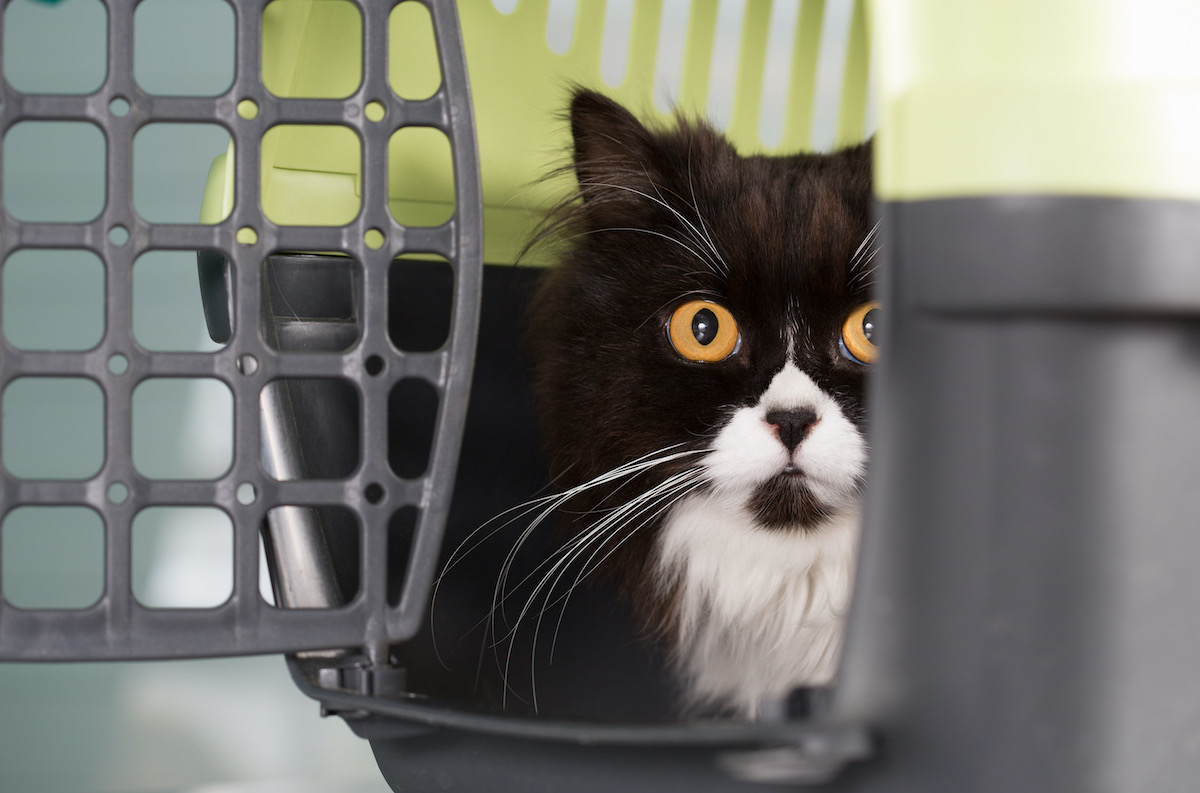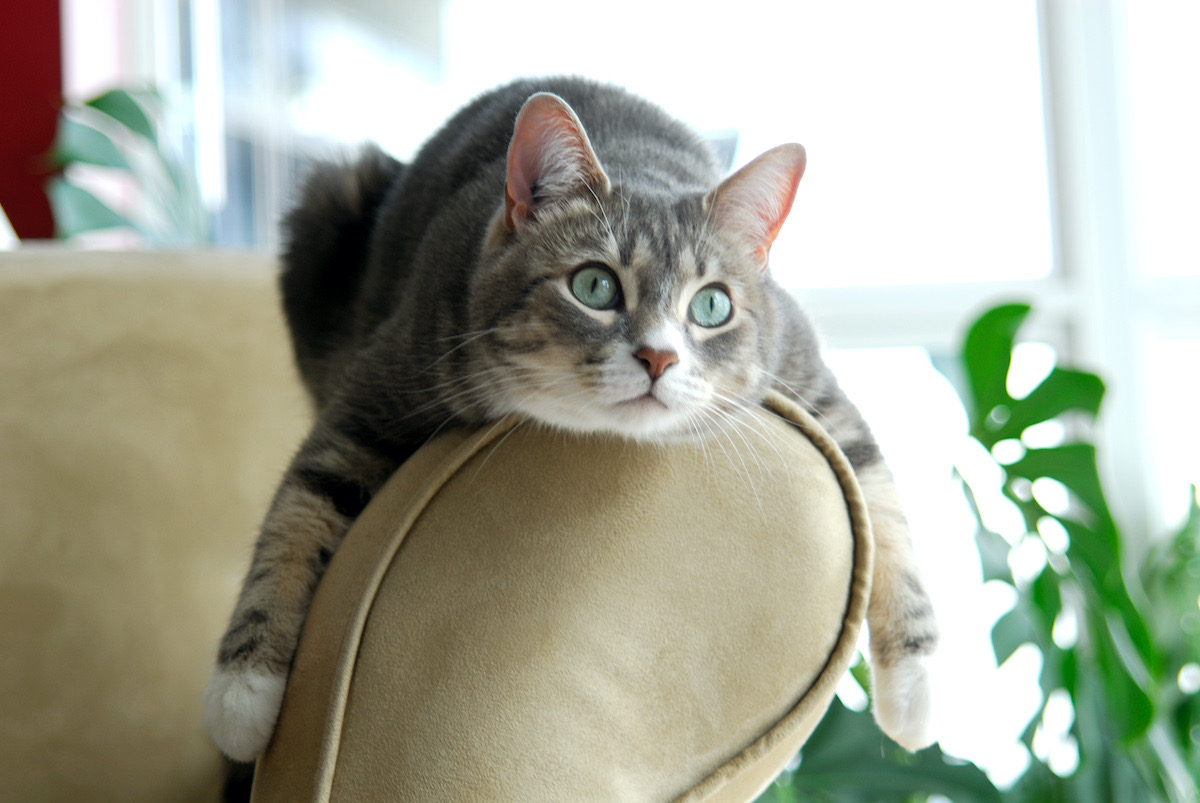Moving home is stressful when you know what’s coming, so it’s not hard to imagine how your feline friend will feel once moving day rocks around. Cats are incredibly sensitive creatures, and familiarity with their territory is vitally important to their overall wellbeing and security.
Scent and routines, too, will be affected by upping sticks, but there are strategies you can employ in order to minimise the disruption, and we’ll walk you through all of the above in today’s post.
Board or keep at home?

This is a big question and, as with so many other pet-related posers, there’s no right or wrong answer. A lot will come down to personal preference and how confident you feel about managing the move with pusskins still around.
Some cat owners will feel more comfortable knowing that their beloved bundle of fluff is being well looked after at a local cattery, while others won’t entertain the idea of boarding at all. It’s entirely up to you.
One thing is certain, though. If you choose to keep your cat with you while you move, you will need to plan accordingly, which is what we’ll cover next.
Start early and plan ahead

A common mistake many pet owners make when moving home with a cat is leaving things to the last minute. Granted, there’s a lot on your plate when moving, but a little forethought can go a long way when it comes to making the move go as smoothly as possible for your kitty.
Let’s take a look at what you should be doing in the run up to your move:
Create a safe space
Providing you have the room to do so, creating a safe space for your cat within your old home will help keep them calm once the hubbub of moving day commences.
Start moving things like their bedding, litter tray, food, water, and any other favoured items to a room that can be secured on the day of the move. This will serve the dual purpose of keeping kitty safe and stop them from getting under your feet while you move out.
Keep in mind their sensitivity while making these changes and take things slowly - do not move everything all at once! Take your time and plan to have them settled in the quiet room for at least a week before you move. You could also introduce artificial calming pheromones to the room, such as Feliway, to lessen the stress further.
When moving day arrives, keep the door to the room shut and ensure all windows are closed as well. It’s also a good idea to put a sign on the door to stop anyone opening it up and inadvertently letting puss make her escape!
Maintain your normal routine
Packing for a move can play havoc with routines, but it’s important to stick to how you lived before all this craziness started as much as you possibly can. Keep feed times the same and make sure they have access to you (and your lap!) when they ordinarily would.
Maintaining your normal routine will help your cat to feel safe, secure, and settled. It’ll also give you a good excuse to slow down, too, making it a win / win.
Prepare for the big day
Along with all the other preparations you’ll have going on, there’s one thing you can do to help ease your cat towards moving day. It’s simple, but incredibly effective: put their cat box out and leave it open for a couple of weeks before you need to use it.
Cats are very astute and many will see the dreaded cat box as a signal that a vet trip is imminent, which is far from ideal when you want to keep them calm. Having the cat carrier out in the open for a good period of time will desensitise them to it somewhat and make your life easier when the time comes to load them up and move them on to pastures new.
Another thing you can do is introduce some fleece blankets or throws to the safe room for your cat to ‘scent’. This will help ease the transition when you move, as you can simply put these down in their new spot to give them a degree of familiarity and security.
Moving day

Much of what you’ve done in the run up to moving will be repeated on the big day itself. Keeping routines as close to normal as possible, having them in their safe spot (with the key difference being a shut door, of course!), and giving them plenty of fuss and attention will all play a part as you move home.
There are, however, a few other things you’ll need to attend to on the big day…
Travel arrangements
Travelling from your old abode to the new pad shouldn’t be any different to how you usually transport your cat for, say, vet visits.
Make sure the cat box is secure by strapping it in with your car’s seat belts or by wedging between other (safe) objects. If possible, having someone familiar nearby to reassure and tend to kitty while you travel, too, will help keep her calm and feeling safe.
For long journeys, be sure to have water available and never, ever, leave a pet in a closed car.
Cleaning and reintroducing scent
When you have the keys to your new home, you’ll naturally want to give the place a thorough clean before you unpack and begin to settle in. While you’re doing so, it’s important to bear in mind just how much our cats rely on their sense of smell.
Cats will rub themselves against things (both animate and inanimate!) to make them feel more familiar to them. This behaviour reassures and calms the cat, and you can use this to your advantage. The aforementioned fleece throws and blankets can be used to make your cat feel at home, but you can also take things a step further.
Using a soft, clean, pet safe cloth, rub around your cat’s head and then wipe that cloth onto skirting boards, furnishings, and doorways, thus transferring their scent onto each item or area. While we won’t be able to pick up on this subtle sensory change, your cat most definitely will, and it’ll help them feel at home a lot quicker.
You can also continue to use the artificial plug-in pheromone dispensers we mentioned earlier to ease the transition further.
Take things slowly
While it may be tempting to let Felix find his own way, it’s far wiser to take things slowly. Just as you did before the move, creating a safe spot in your new home will serve you well, too.
Have all of their belongings out in this room and keep them confined for as long as it takes to make them feel comfortable and confident in their new surroundings. Some cats will benefit from being alone during this transition period, while others will appreciate quiet company. You know your animal best, so treat yours accordingly.
You may find that they will be extremely tentative at first, and that’s absolutely fine. Allow them the time they need and give them space.
Getting your cat settled in their new home

Settling in can take time, for both humans and non-humans alike. Take the following into consideration:
Be mindful of stress signals
Cats will display stress signals in a number of different ways, but some of the most common when moving home are often the worst for us humans. Accidents outside of the litter tray are not unusual.
While this is an inconvenience you can definitely do without, it’s essential to show patience and understanding when this happens. Keep the litter tray as clean as you possibly can and gently reintroduce your cat to it whenever they are showing signs of needing to go.
Excessive grooming, vocalisation, and scratching can also be telltale signs that kitty isn’t entirely comfortable just yet. Speak to your vet if any of these continue for an extended period of time.
Broadening their horizons bit by bit
As with the section on taking things slowly above, this should continue beyond moving day. Introducing your cat to new parts of the house gradually will help lessen any feelings of overwhelm they may have and allow them to scent the new areas in their own time.
Make sure that all access to the outside world is restricted for the time being, despite any protestations from the furry fellow. We’ll get to that in just a sec.
Making the new place fun
Once your cat begins to bolden, you should start making their new home as exciting as you possibly can. Increase play time, make grooming a regular occurrence, and offer treats frequently in order to make this still-strange place feel more like home.
Remember, cats have a built-in drive to return to where they feel most familiar, so doing the above will cut the chances of them trying to make their way back to your old address significantly when the time comes for them to venture outside. To be safe, however, make sure you give your contact details to the new owners...just in case.
Taking things outside
The final step, for outdoor cats at least, is to allow them access to the garden and beyond. This should not be attempted any earlier than three weeks, but preferably longer if you can.
In the meantime, it can be a good idea to take some of your cat’s used cat litter and liberally powder the perimeter of your garden with it. This will give the local cats fair warning that there’s someone new in town and make the area more familiar, from a sensory perspective, to your cat once the time comes for them to explore.
Once you’re ready to let them out for the first time, it’s a good idea to do so when your cat is hungry. Open the back door and let them roam out in their own time, then put their food down for their return. The first foray is likely to be a short-lived affair anyway, but the additional enticement will help bring them home should they be tempted to stray.
Again, slowly is the key. If you open the door and they stay put indoors, that’s fine. They’ll go out when they want to, so just try again tomorrow or before their next meal. You can even go out with them, as some will feel reassured by your presence and gain confidence if you’re around to help them get used to this new space.
That’s it, our guide to moving house with a cat is complete. We sincerely hope you found this useful and that it’ll help keep your stress levels in check, too! Got a dog as well? This post should be next on your reading list: Moving Home With A Dog: Tips To Help Your Best Friend Adjust
If you’re in the very early stages and just considering moving home in or around London’s E11 postcode, we can help. Petty Son and Prestwich have been helping people just like you find their forever homes for well over a hundred years, and we’d love to welcome you to the family.
Give our friendly team a call to find out how we can help you buy, sell, rent, or let. Oh, and don’t forget to check out our own four legged friends on social media, too. Take a look at #pettyspets here and here.
